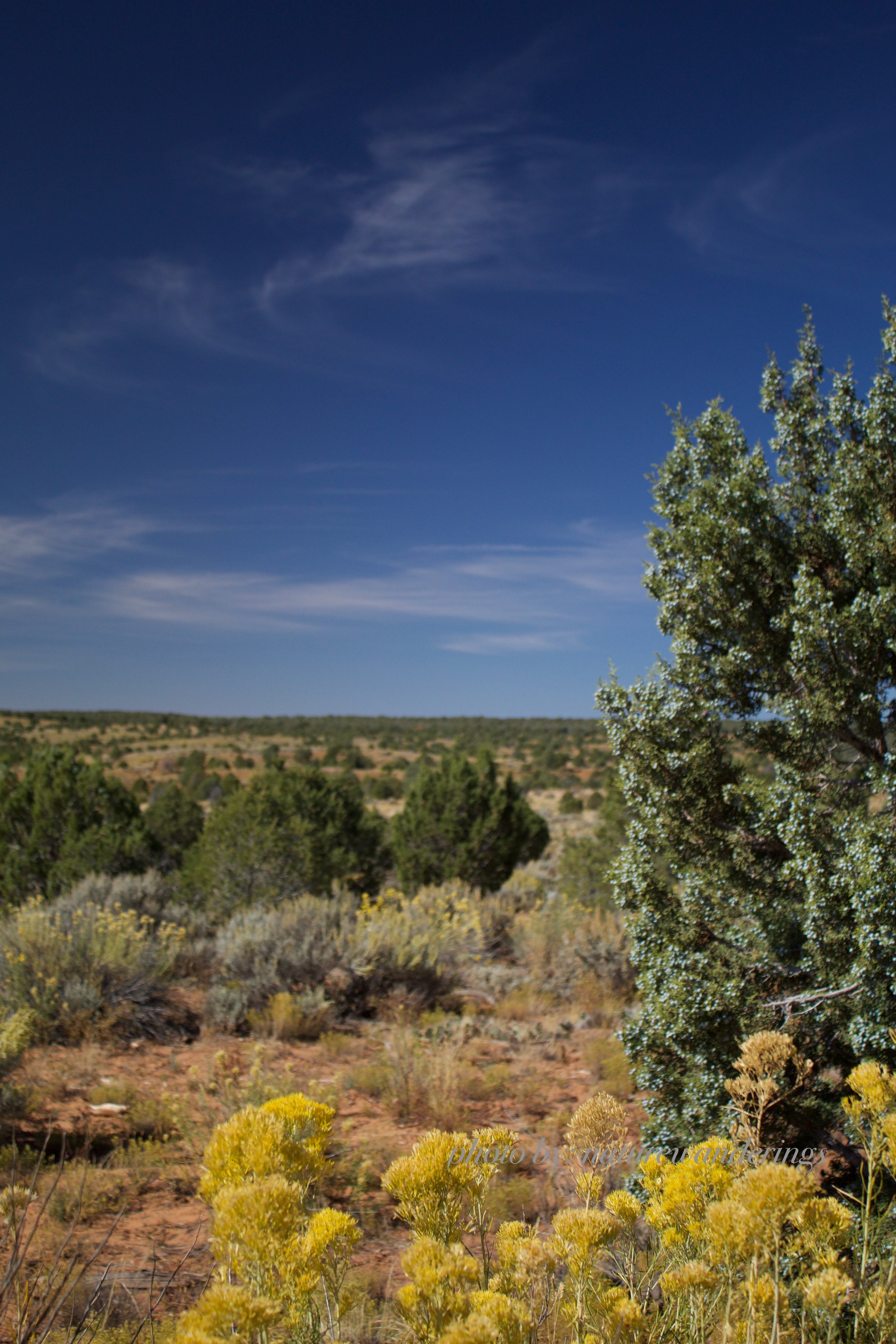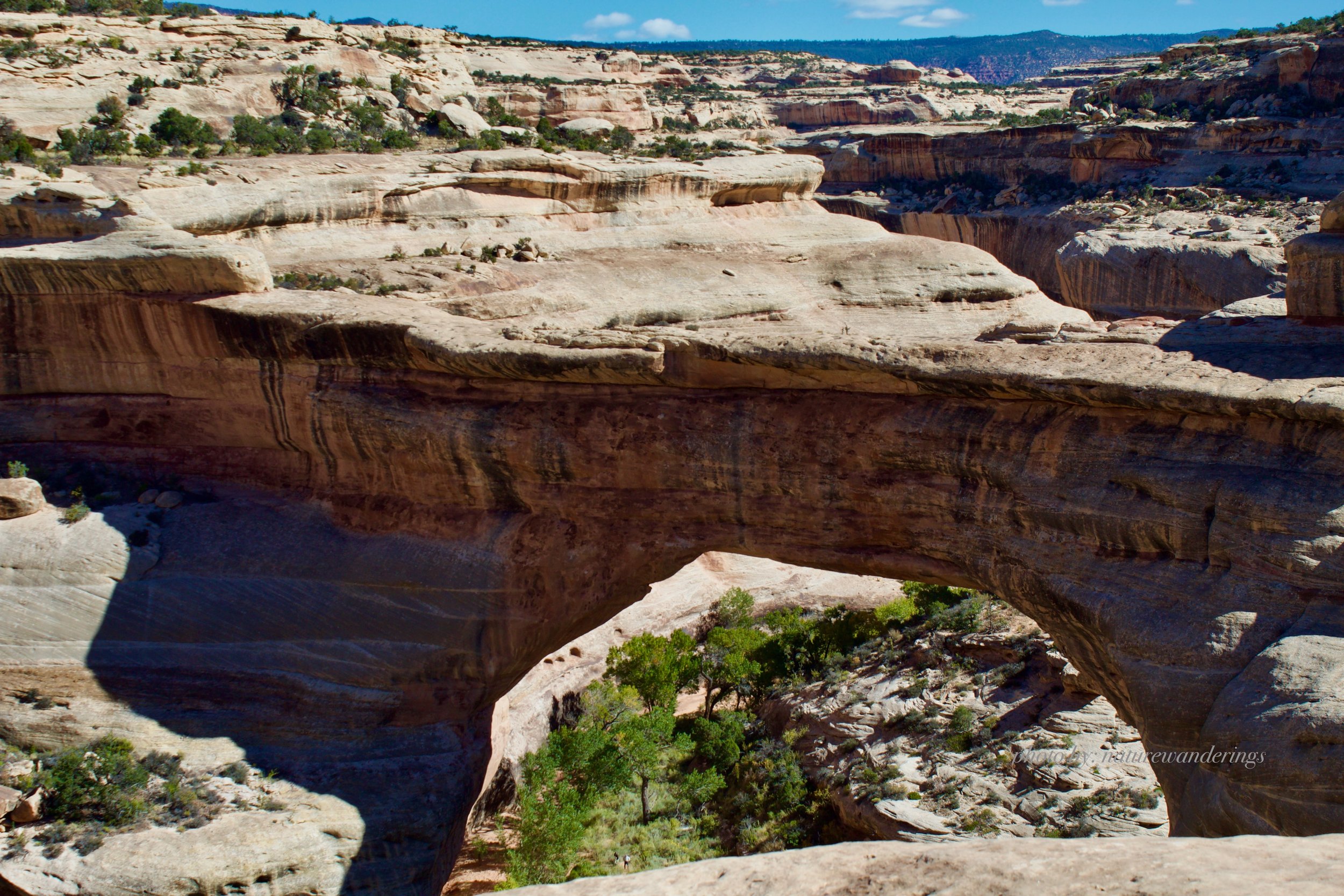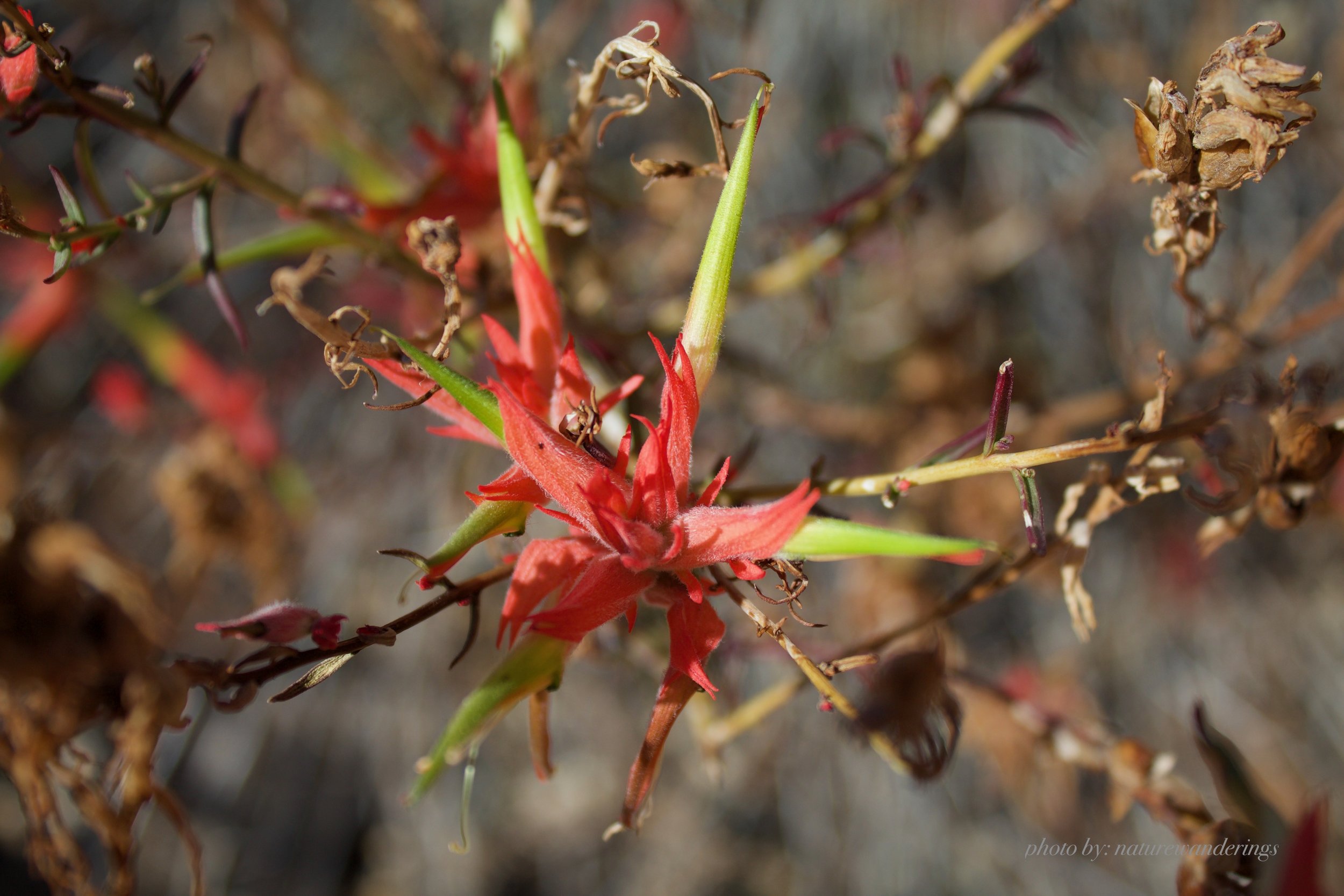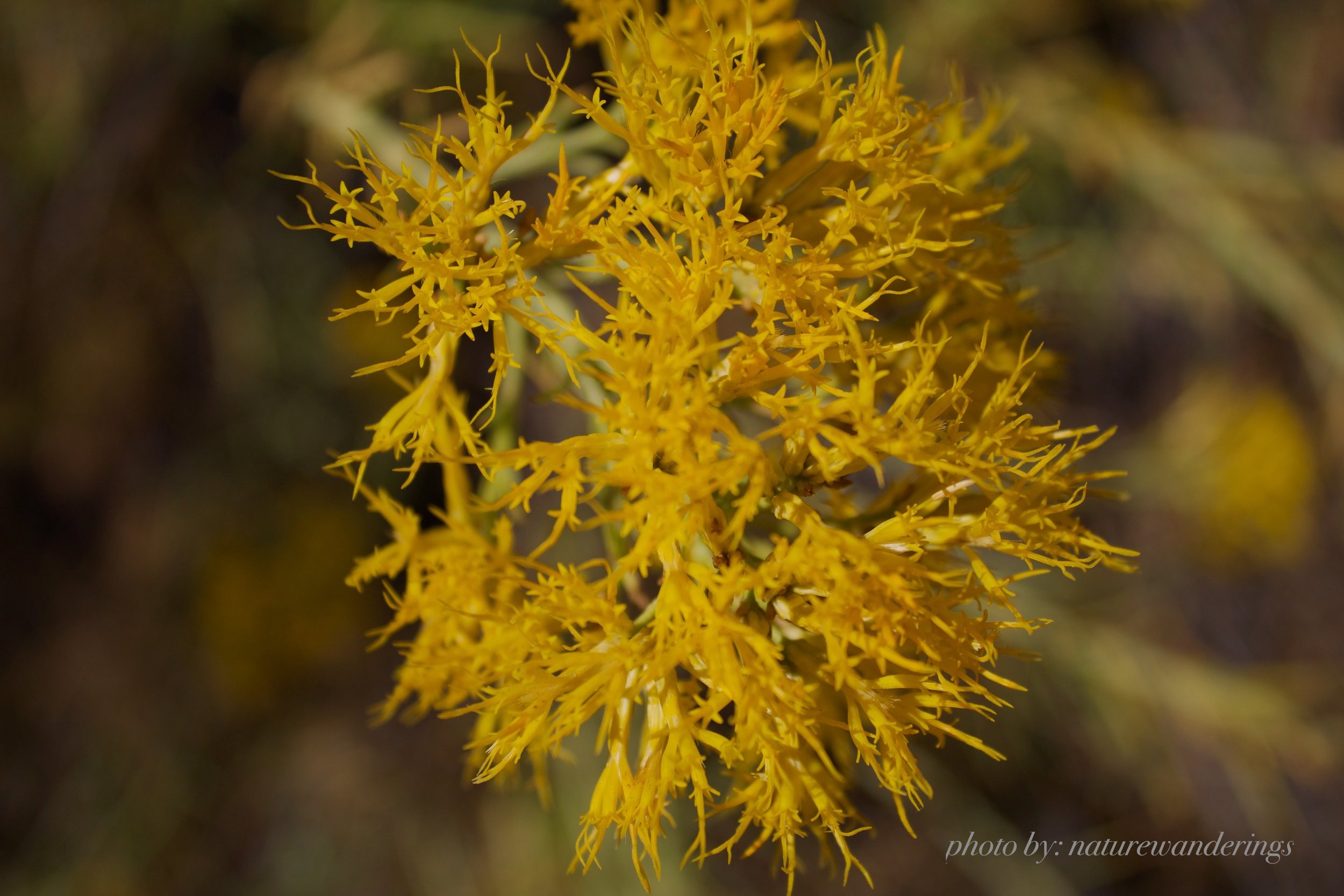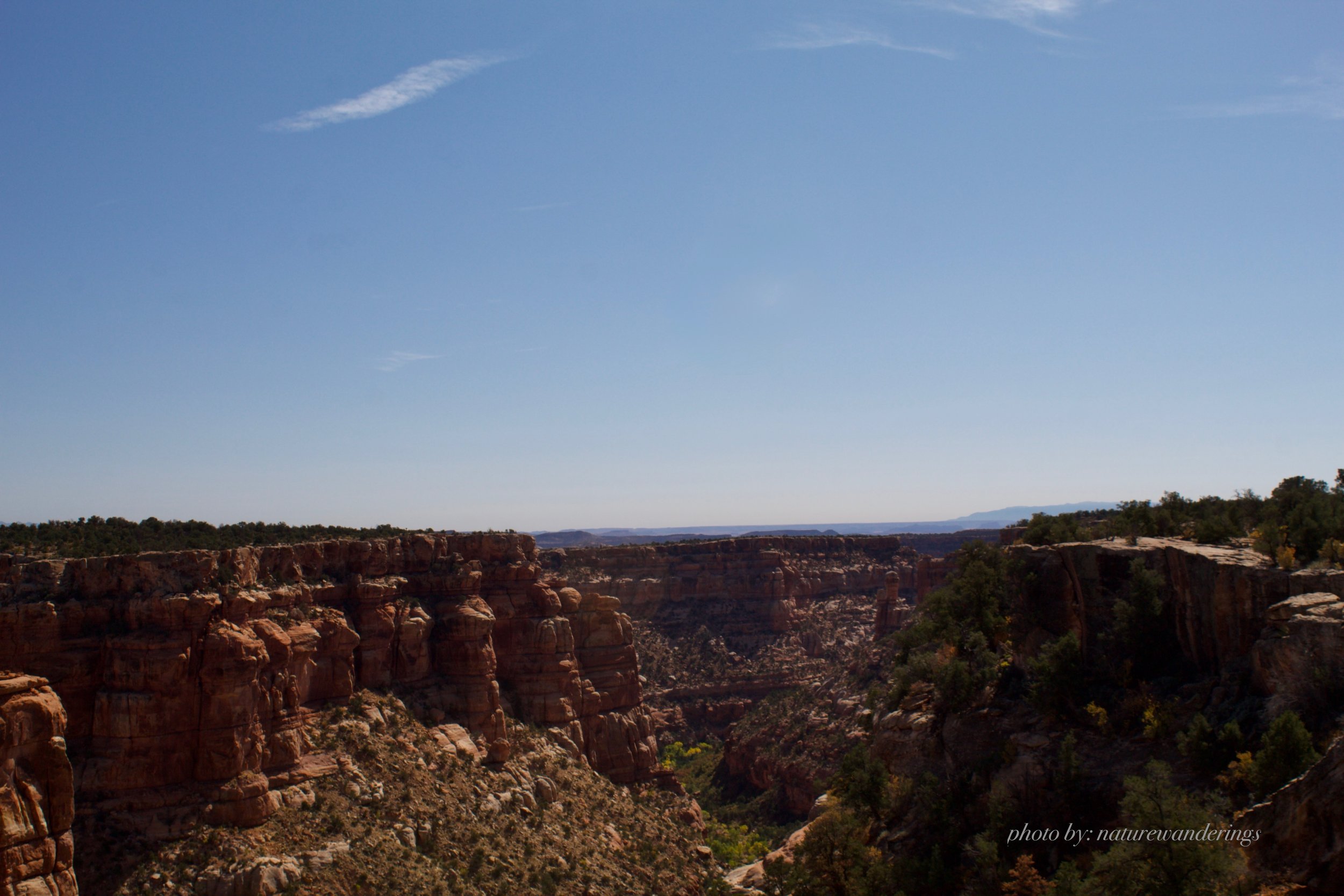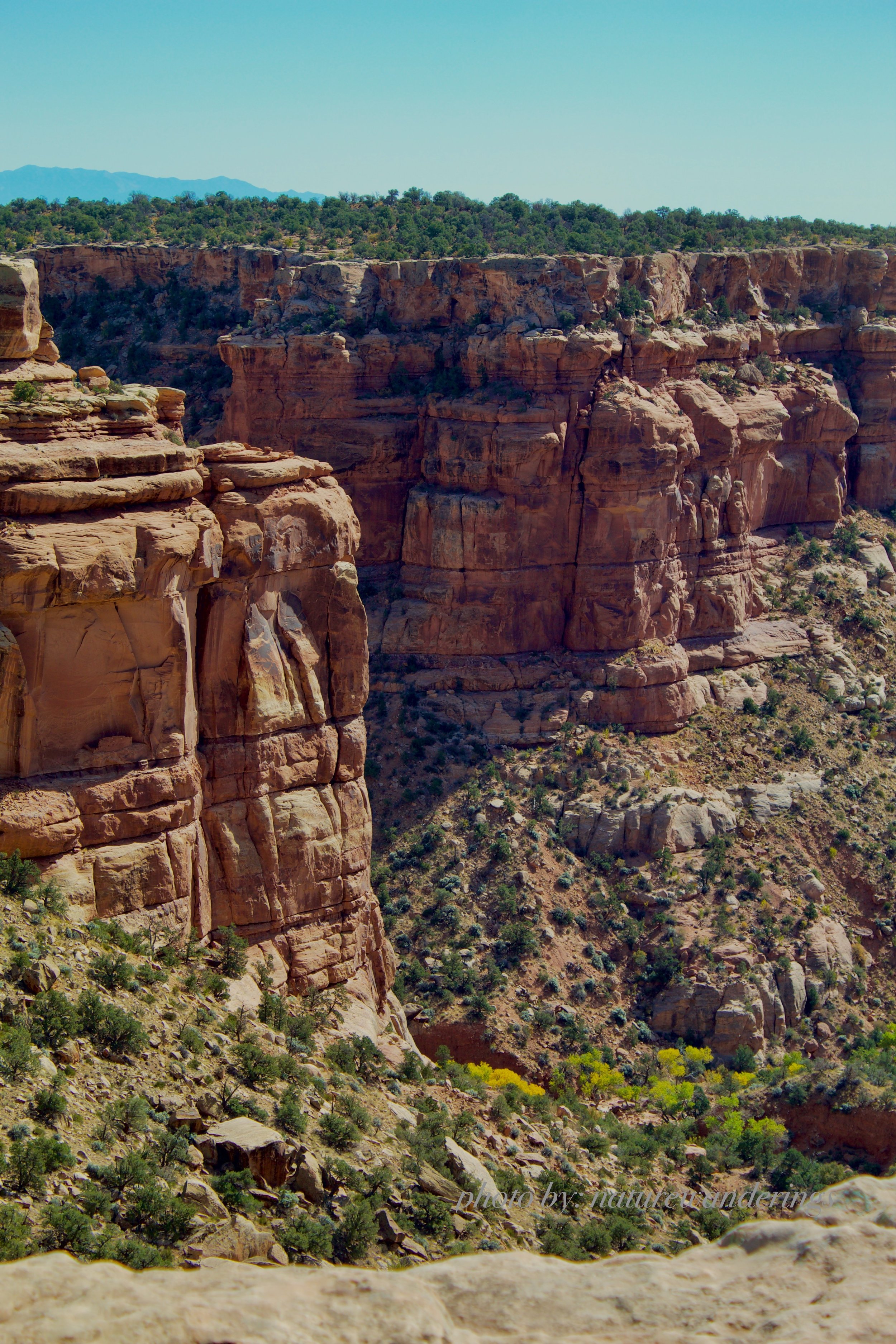Breathtaking Bears Ears!
Have you ever been to a place that took your breath away and stayed with you long after you left? That is what I experienced with Bears Ears National Monument.
Bears Ears National Monument is on the traditional lands of the Hopi, Navajo, Zuni, Ute, and other Tribes and Pueblos in Southeastern Utah. It is 1.9 million acres of beautifully stunning colors and textures that the Bears Ears Inter-Tribal Coalition, Bureau of Land Management, and the Manti-La Sal National Forest jointly manage.
The richness of the contrasting colors of the high desert flora against the red rock and blue skies makes for stunning vistas everywhere you look.
Within the boundaries of Bears Ears is the Natural Bridges National Monument, a National Park Service unit. The above picture, taken at Natural Bridges, demonstrates the scale and texture of the landscape. Note the arrow pointing to the lone hiker at the bottom of the canyon next to an ancient building.
With so many acres to explore and limited time, I focused on the Cedar Mesa area near Blanding, UT. Blue Mountain RV Park and Trading Post was a nice campground with modern conveniences, friendly hosts, and best of all—shaded tent platforms! If you would like a more rustic experience, Bears Ears offers primitive camping along unpaved desert roads, and Natural Bridges has a small, nice-looking car camping area.
The first day, I drove from Blanding to Natural Bridges National Monument, which was a nice way to orient myself to the landscape of the Cedar Mesa Unit.
The bridges that give this park its name were formed over millions of years of water carving through the sandstone landscape, creating bridges and canyons. Today, water still flows through the canyons, and it is possible to view the landscape from the top via overlooks or trails that will take you into the canyon. Remember, this is a desert environment, so be sure to check in with the rangers at the visitor center for hiking advice.
The view from the midway point down the Sipapu Bridge Trail gave a fascinating insight into the natural history of how water shaped these bridges.
Curious about the differences between arches and bridges, I learned that while these formations were formed by water, the arches at Arches NP to the north were formed by the forces of the wind.
On my second day, I drove from Blanding to the Kane Gulch Ranger Station to purchase the required permit for hiking in the Cedar Mesa area ($5.00/day, $10.00/week, $40.00/year).
Along the way, I couldn’t help but notice striking flowers blooming along the roads and trails like this beauty.
One of the brightest colors I see as I travel this area is the vibrant yellow Rubber Rabbitbrush—an interesting name for such a gorgeous flower. Besides adding a blast of color to the canyons, the Rubber Rabbitbrush is an important food source for jackrabbits and a good source of shade for critters.
After looking at the Bears Ears visitor guide, I decided to hike the Cave Towers Trail. It is an easy one-mile hike along the top of the mesa to a stunning view of Mule Canyon.
There is a parking area next to the road or you can drive a short but adventurous dirt road to a parking area closer to the trailhead. This trail is not long but in full sun, so be sure to bring water!
Walking along the mesa top was such a peaceful stroll. As I left the parking area, I felt transported back to an earlier time. Soon, perched on the canyon’s edge, I saw one of the towers that gives the trail its name.
Sitting on the mesa's edge, looking over the canyon, I let the peace and calmness of this ancient landscape wash over me. Something about the stillness and quiet of the high desert calms my soul.
This viewpoint gave me an expansive view of Mule Canyon and all the wonderful textures and colors of this very special canyonland.
Bears Ears is a visual feast with contrasting colors, textures, and long views.
Juniper and sage grow next to colorful flowers.
The weather-worn trunks of trees that have braved the harsh growing conditions add to the unique landscape of this special land. Everything that grows here demonstrates the strength and resilience that make Bears Ears National Monument a place to respect and protect.
And the best way to protect and respect this land is to educate yourself before exploring. The Bears Ears Inter-Tribal Coalition and the Bears Ears Partnership are great places to plan your trip and learn about visiting respectfully. The Bears Ears National Monument website has maps and information on trails, camping, and other essential details.


